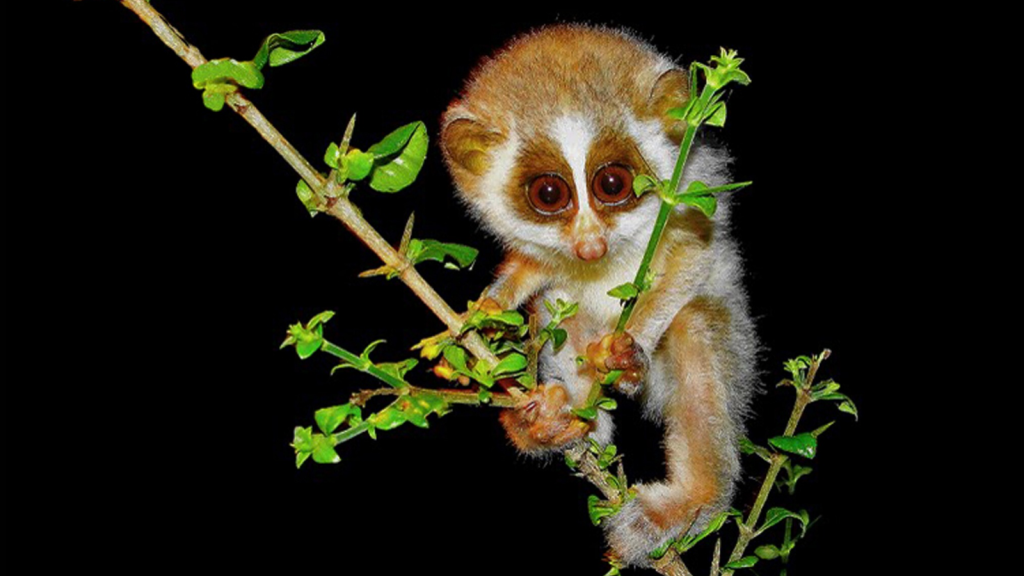The slender loris is a small, nocturnal primate that calls the forests of India and Sri Lanka home. With its huge, saucer-like eyes and long, thin limbs, this creature looks like it’s stepped straight out of a fairy tale. But don’t be fooled by its cute appearance – the slender loris is a skilled hunter, using its unique adaptations to catch prey in the dark. From its bizarre eating habits to its surprising strength, this little primate is full of surprises. Get ready to discover some fascinating facts about one of the animal kingdom’s most unusual members.
Big Eyes, Big Surprises
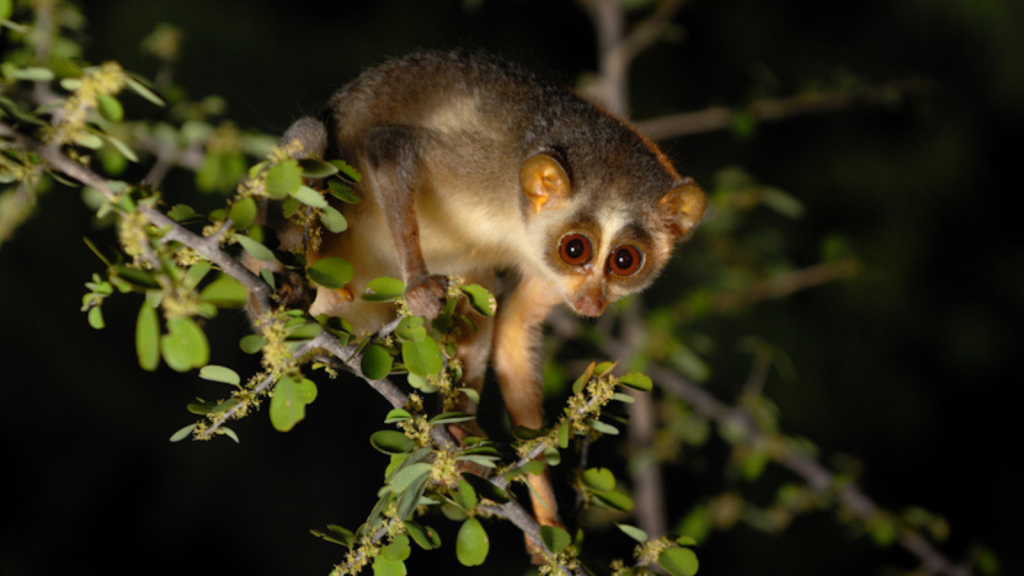
The slender loris has enormous eyes that take up most of its face. These oversized peepers help it see clearly in the dark, when it’s most active. The loris can’t move its eyes, so it makes up for this by being able to rotate its head nearly all the way around, just like an owl. Interestingly, their large eyes lack the reflective layer that many nocturnal animals have, making their night vision even more impressive.
Slow and Steady Wins the Race
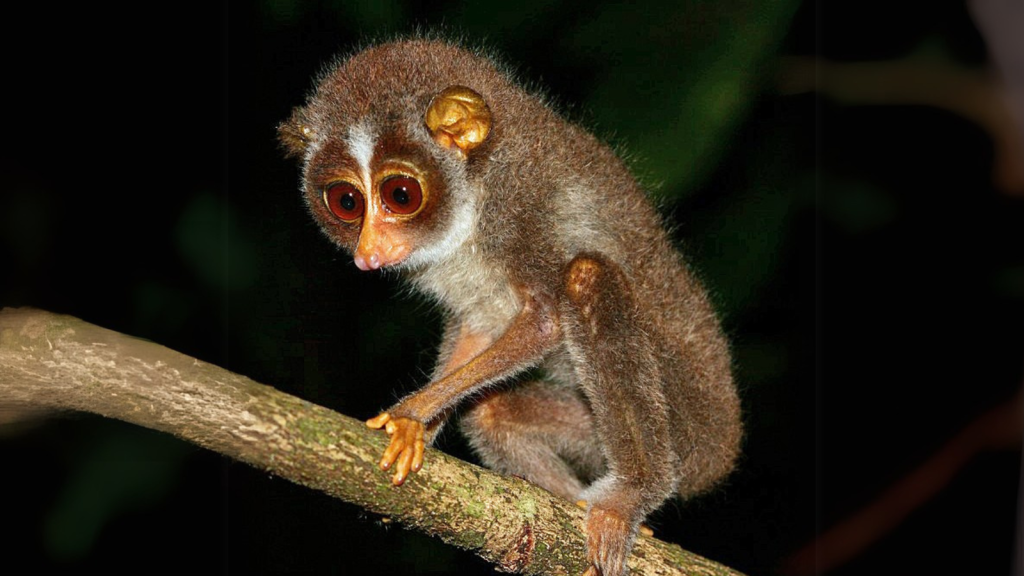
Despite its name, the slender loris isn’t known for its speed. It moves very slowly and deliberately through the trees, often freezing in place when it senses danger. This careful movement helps it sneak up on prey without being noticed. Their top speed is only about 1.5 miles per hour, making them one of the slowest-moving primates in the world.
A Grip That Won’t Quit
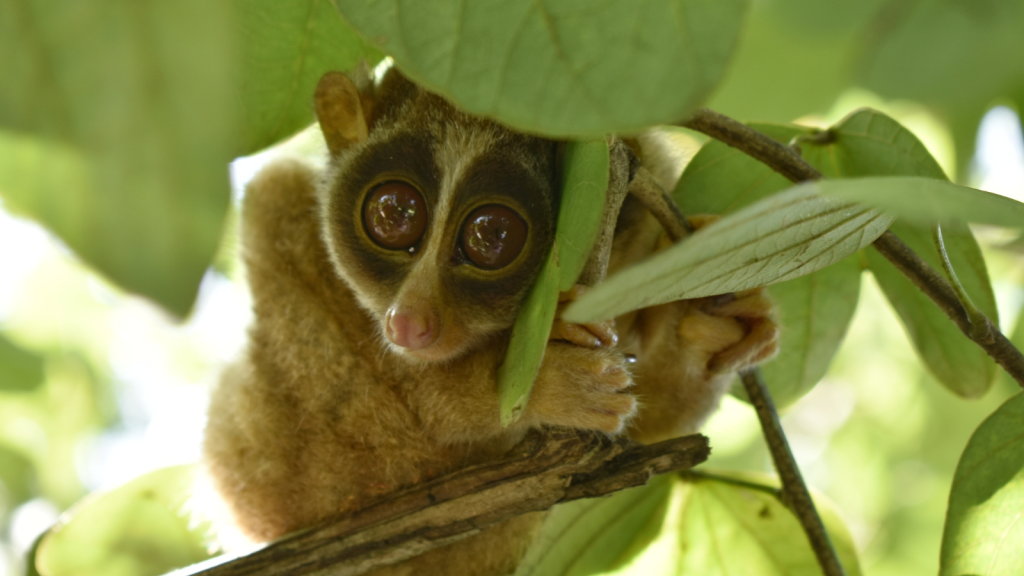
The loris has an incredibly strong grip, thanks to special blood vessels in its hands and feet. It can hang upside down from a branch for hours without getting tired. This grip is so powerful that even in death, a loris won’t let go of its perch. Scientists have found that a loris can support its entire body weight with just one finger or toe.
Midnight Snacker
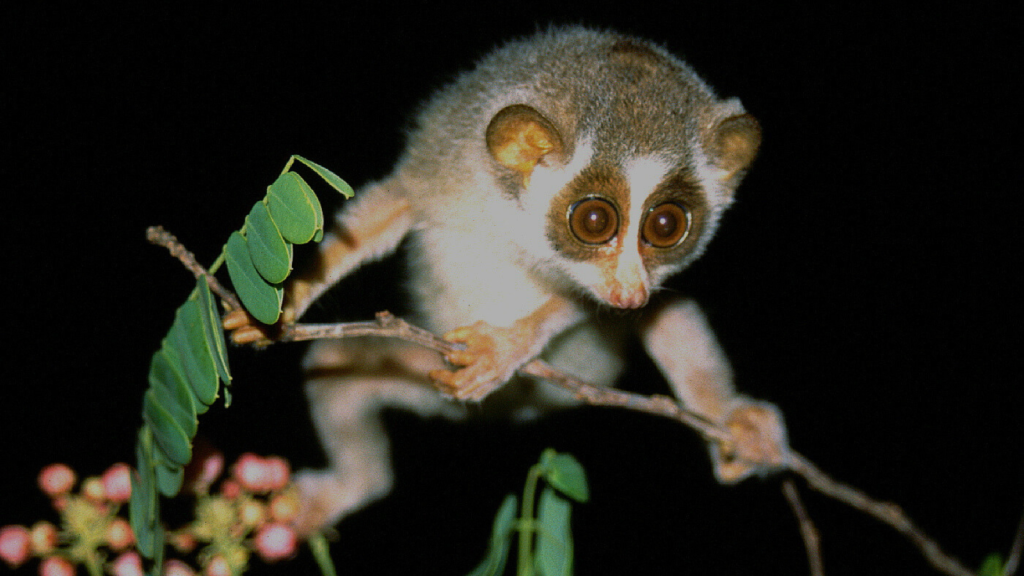
As a nocturnal animal, the slender loris does all its eating at night. Its diet is mainly insects, but it also enjoys small lizards, bird eggs, and even some fruit. It uses its long, thin fingers to pluck insects from leaves and branches with surprising speed. The loris has a particular fondness for prickly insects that other animals avoid, such as ants and beetles with hard shells.
The Loris Shuffle
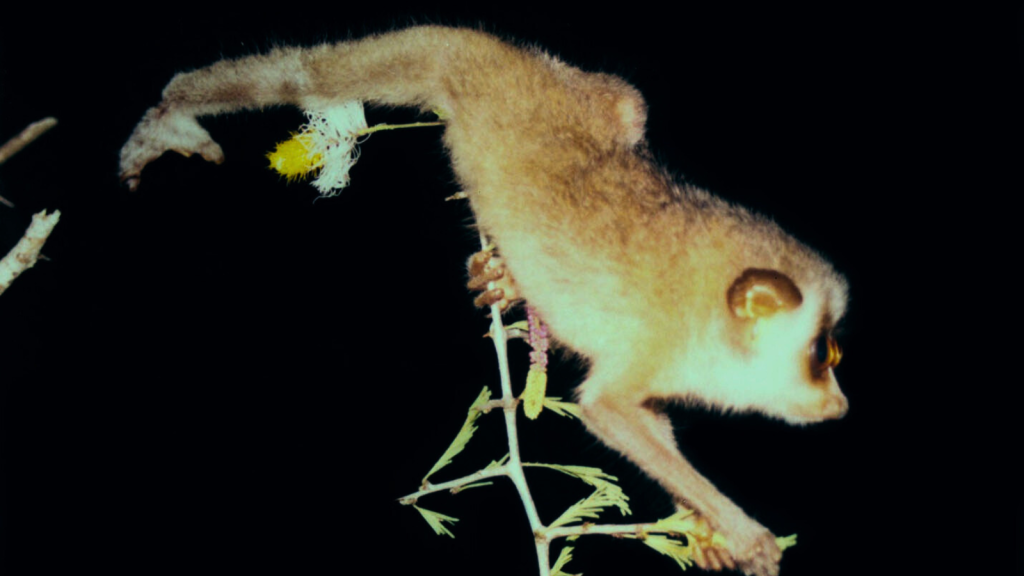
When moving along branches, the loris uses a unique form of locomotion. It reaches forward with its front limbs, then brings its back legs up to meet them in a smooth, fluid motion. This “shuffle” helps it move silently through the trees. This movement is so distinctive that researchers can often identify loris activity just by the pattern of disturbed leaves they leave behind.
A Solitary Life
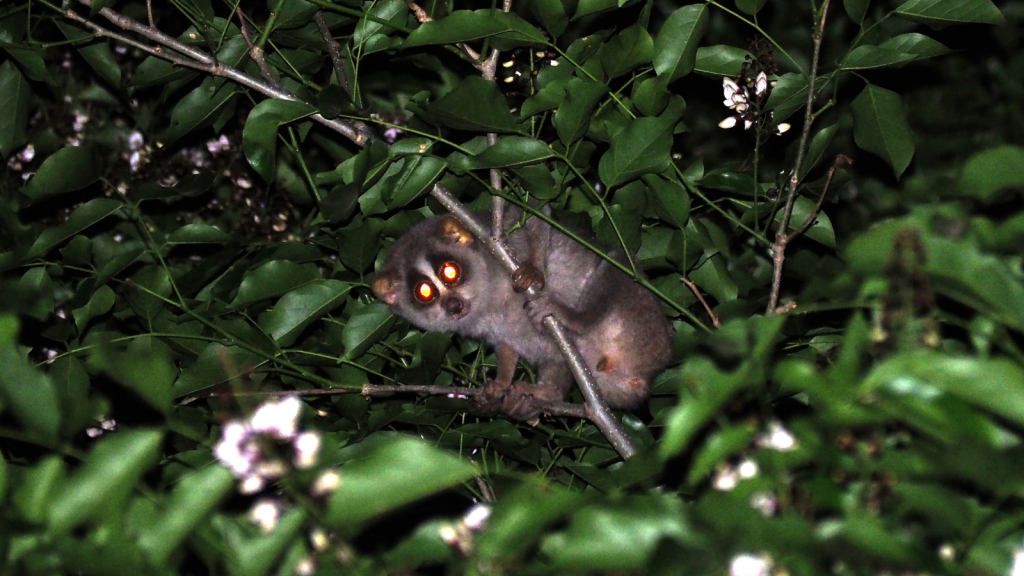
Unlike many primates, slender lorises are mostly solitary creatures. They spend their days sleeping alone, curled up in the fork of a tree. At night, they might meet up briefly with other lorises, but they generally hunt and travel alone. Each loris has a home range of about 100-200 meters, which they mark with urine and scent glands to warn off other lorises.
Baby On Board
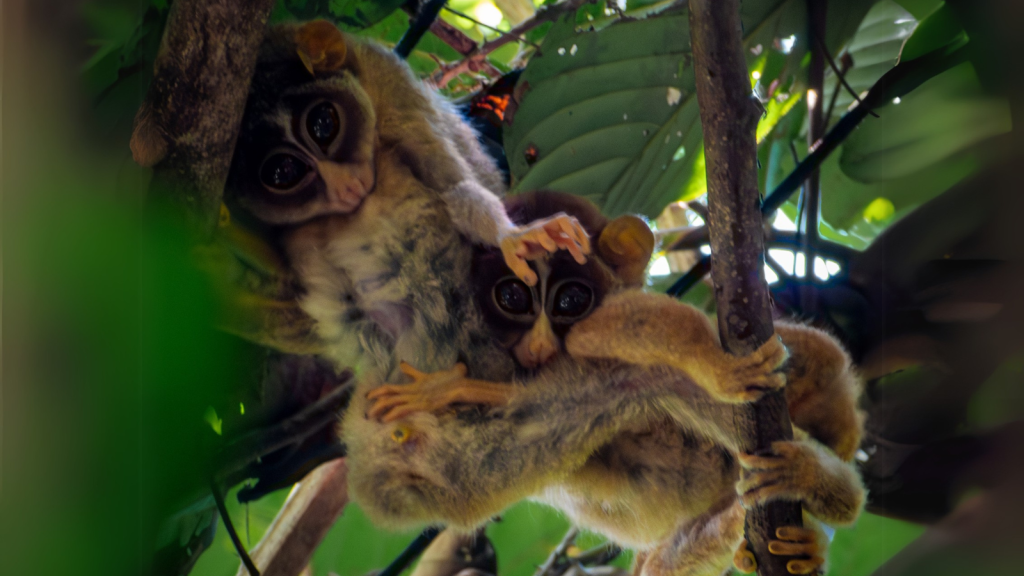
Female lorises carry their babies clinging to their bellies as they move through the trees. When the mother needs to hunt, she’ll “park” her baby on a safe branch, leaving it there until she returns. The baby instinctively keeps still and quiet until mum comes back. Loris infants are born with their eyes open and can cling to their mother immediately after birth, a crucial survival skill.
A Noisy Nighttime
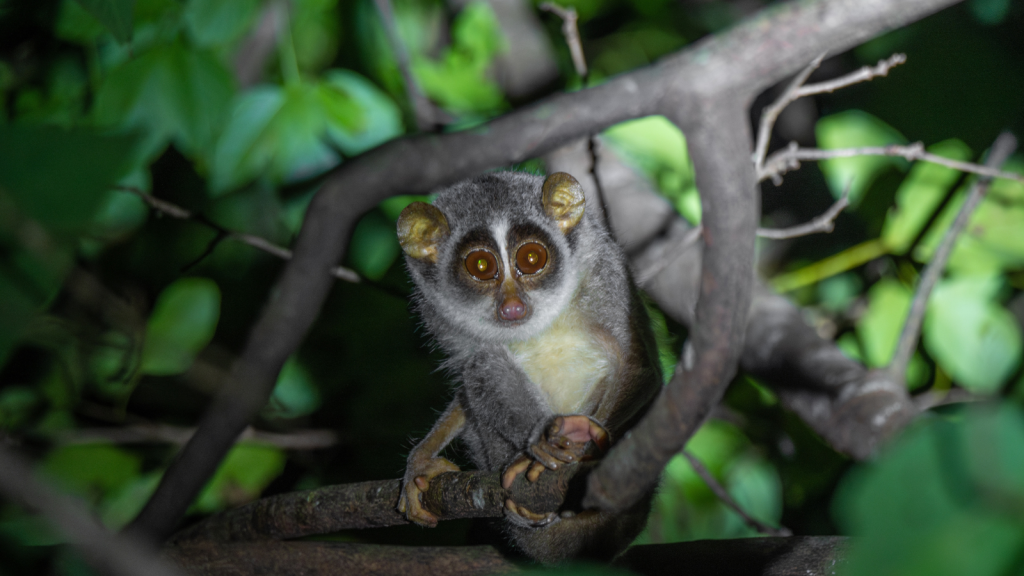
Despite their quiet nature, lorises can be quite vocal at night. They make a variety of calls, from high-pitched whistles to lower-pitched growls. These sounds help them communicate with other lorises and mark their territory. Researchers have identified at least 12 different types of vocalizations in slender lorises, each with a specific purpose.
Masters of Disguise
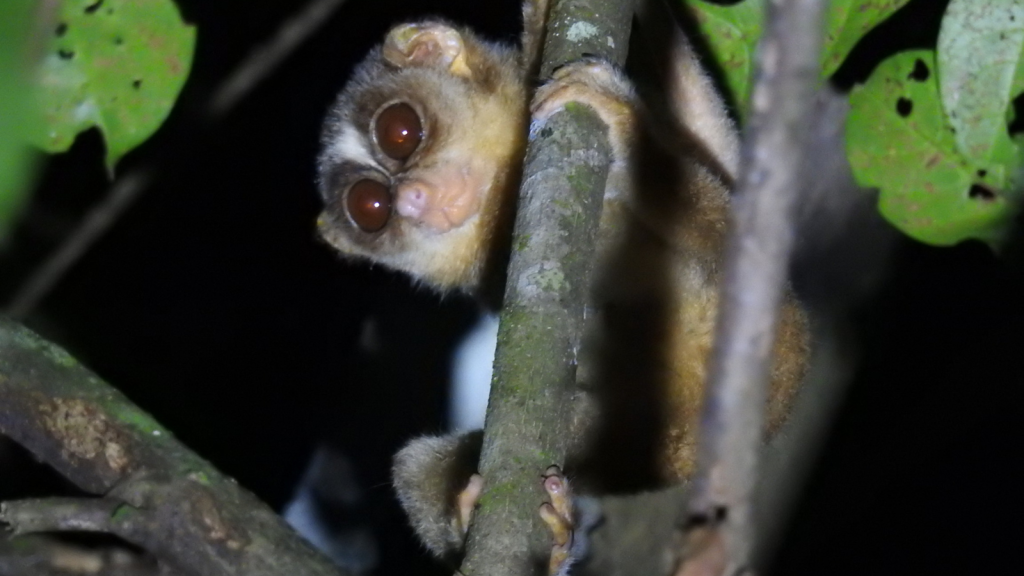
When threatened, a slender loris can freeze in place and tuck its head between its arms. This pose makes it look like part of the branch it’s on, helping it blend in with its surroundings and avoid predators. They can maintain this position for hours if necessary, demonstrating remarkable patience and endurance.
Handy Hunters
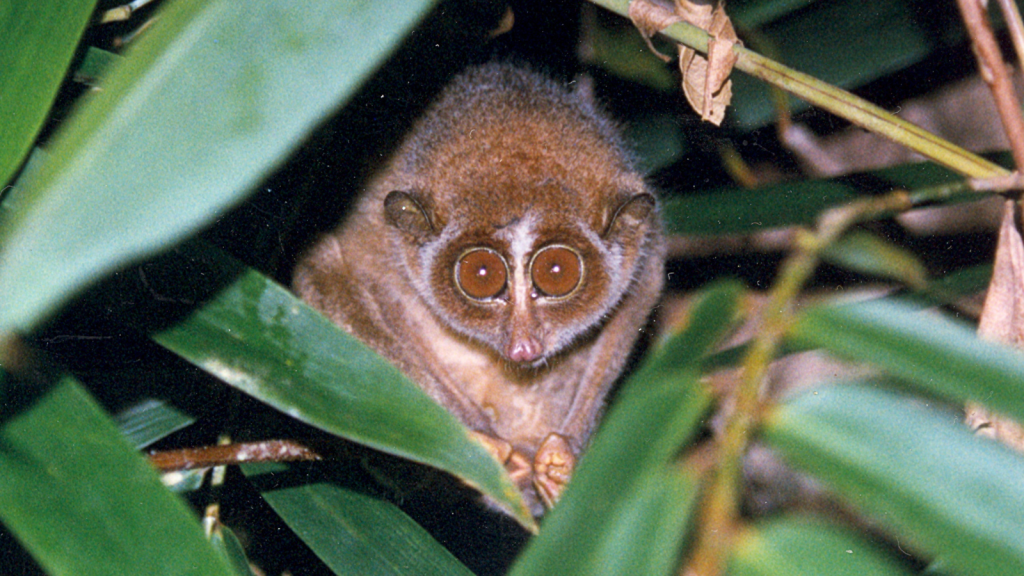
The loris’s long, thin fingers are perfect for reaching into small spaces to grab insects. They can even catch fast-moving prey like moths in mid-air, snatching them with surprising accuracy. Each finger has a special pad at the tip that secretes a slight sweat, improving their grip on both prey and branches.
Slow-Motion Living
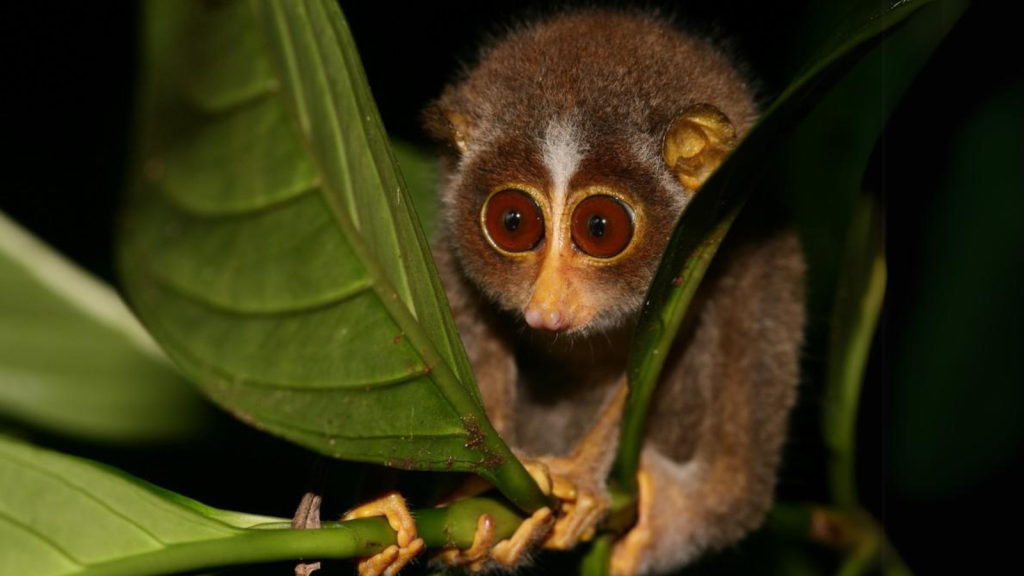
The slender loris has one of the slowest metabolisms of any mammal. This means it doesn’t need to eat as often as other animals its size. It can survive on much less food, which is handy when prey is scarce. Their low metabolism also means they have a relatively long lifespan for their size, potentially living up to 15 years in the wild.
Lonely Hearts Club
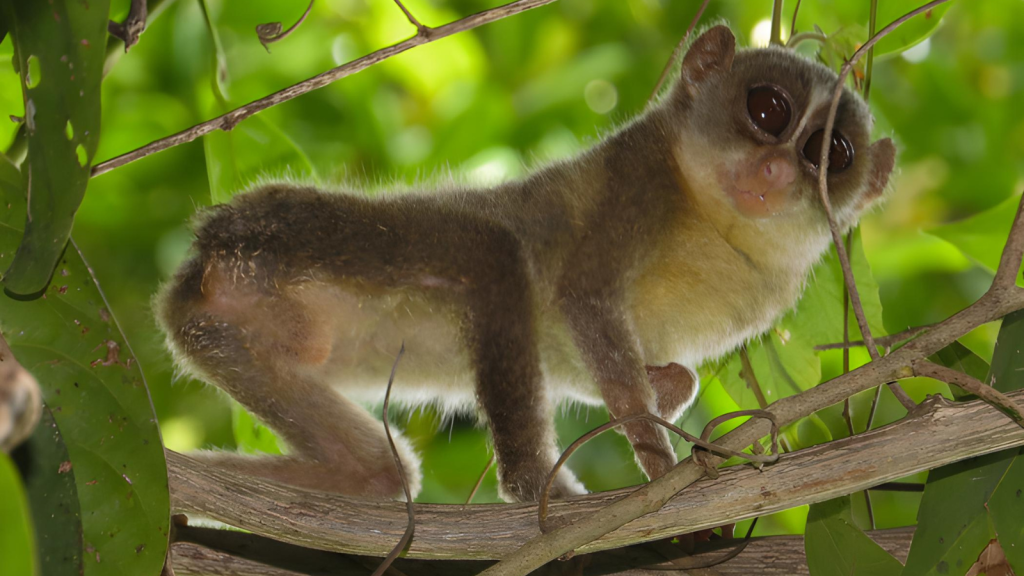
Lorises only come together to mate, and even then, it’s a brief encounter. Females are only fertile for a few days each year, and couples will split up as soon as mating is complete. Male lorises compete for females by having “boxing matches,” standing on their hind legs and swatting at each other with their hands.
Clever Cleaners
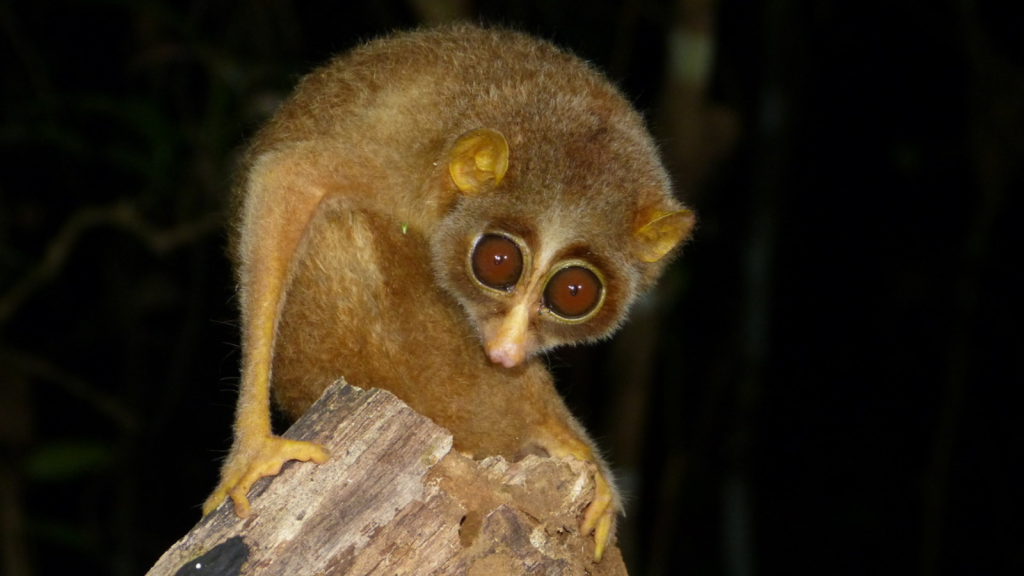
To keep clean, lorises use a special “tooth comb” – a group of teeth in their lower jaw that stick out. They use this to groom their fur, keeping it free of parasites and debris. This tooth comb is also used to scrape tree bark, possibly to extract sap or to help spread their scent.
Nature’s Acrobats
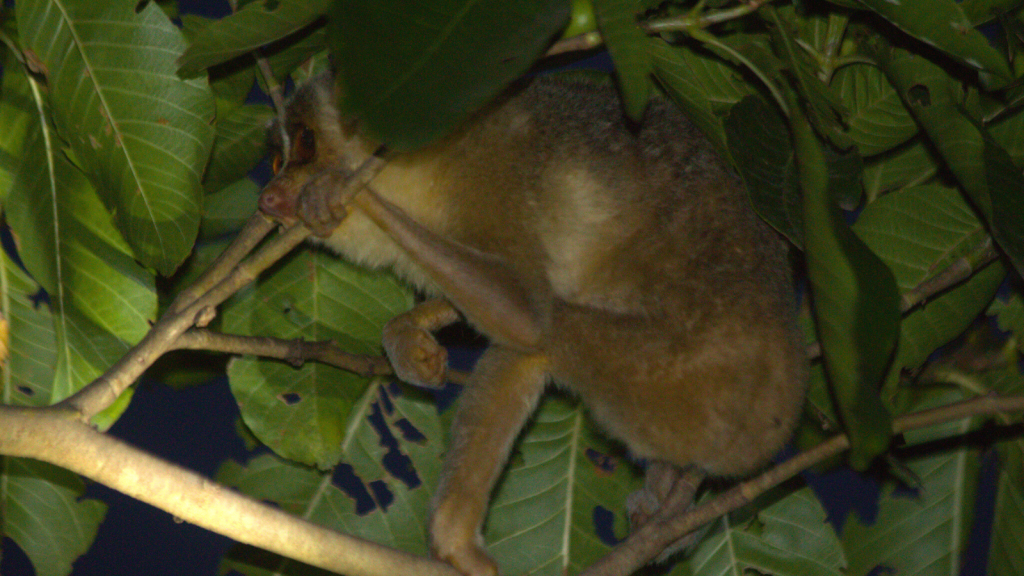
Despite their slow movement, lorises are incredibly agile. They can hang by one hand while reaching for food with the other, and can even hang upside down by their feet while using both hands to eat. Their backbone is incredibly flexible, allowing them to twist their bodies into almost any position.
Scent-sational Communication
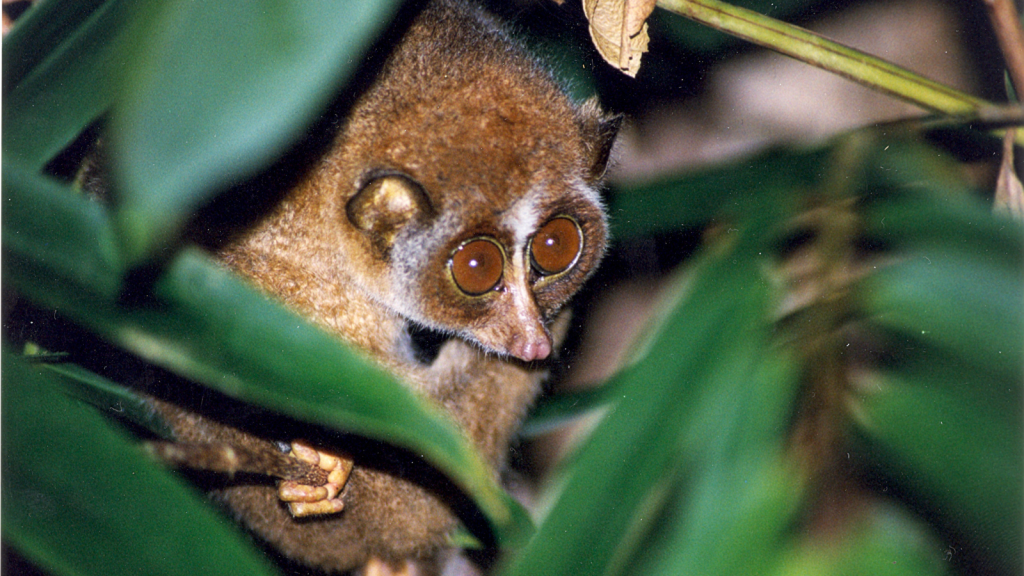
Lorises have scent glands on their elbows which they use to mark their territory. They’ll rub these glands on branches as they move, leaving a trail of scent that other lorises can follow. The scent from these glands is so potent that humans can sometimes smell it, described as similar to curry or cumin.
Endangered Existence

Sadly, the slender loris is under threat. Habitat loss and the illegal pet trade have caused their numbers to drop. Conservation efforts are underway to protect these unique primates and their forest homes. Some conservation groups are working to create “canopy bridges” over roads that cut through loris habitat, helping them safely cross these dangerous human-made barriers.
Loris Look-alikes
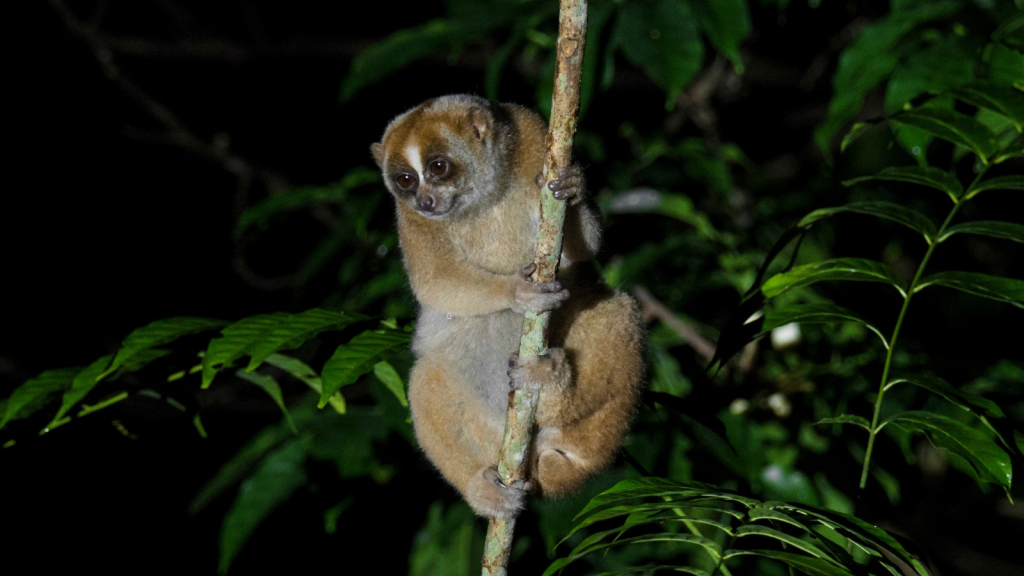
The slender loris has a cousin called the slow loris, which looks similar but is a bit chunkier. Unlike the slender loris, slow lorises are found in Southeast Asia and have truly venomous bites. While they may look alike, genetic studies have shown that slender and slow lorises diverged from a common ancestor over 20 million years ago.
Becky is a fervent wildlife enthusiast and pet care expert with a diploma in canine nutrition. Her love for animals stretches beyond the domestic, embracing the wild tapestry of global fauna. With over a decade of experience in animal welfare, Becky lends her expertise to OutlandishOwl through insightful articles, captivating wildlife information, and invaluable guidance on pet nutrition. Her work embodies a deep commitment to understanding the intricate lives of animals and a passion for educating others on sustaining natural habitats. Becky's hands-on conservation efforts and her knack for translating complex dietary science into practical pet feeding tips make her an indispensable voice for creatures great and small.

